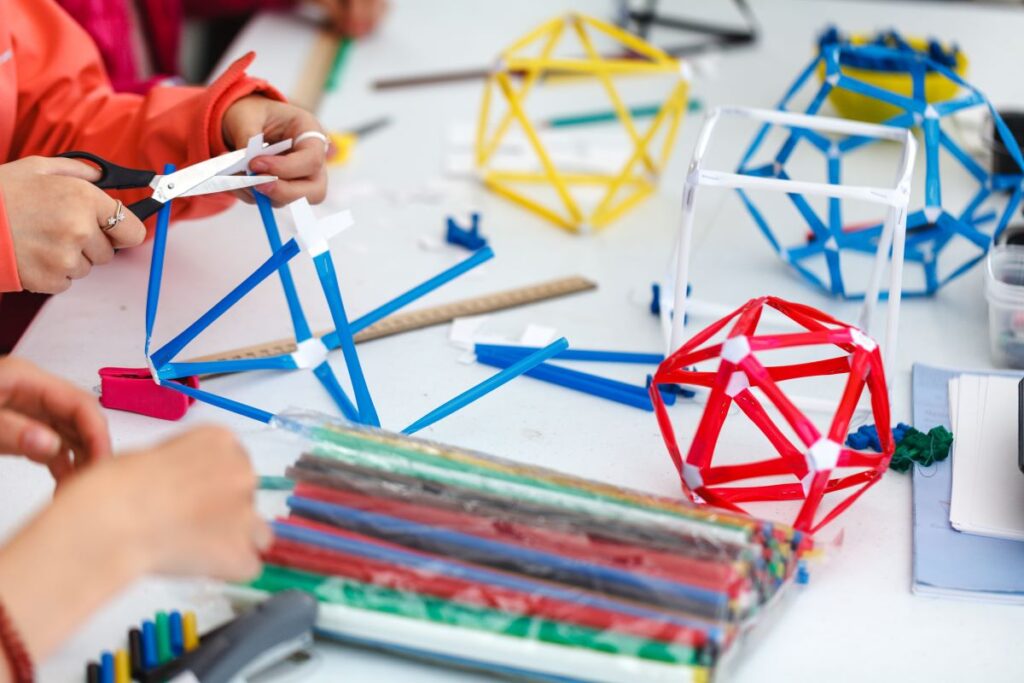Have you ever seen a student’s eyes light up when they move from a textbook to a hands-on project? That moment of active discovery is the magic of learning. STEM — Science, Technology, Engineering, and Math — is not just a buzzword; it’s a powerful approach to education that transforms passive learners into active problem-solvers.
While it may seem daunting to weave these complex fields into an already packed curriculum, the benefits for student engagement and critical thinking are immeasurable.
Imagine a colleague teaching a unit on ecosystems. The lesson plan is solid, but the students seem disengaged. Brainstorming and challenging them with a simple engineering task, which can completely change the classroom dynamic.
Quiet students are now collaborating, sketching designs, testing materials, and debating which filtration layers are most effective. The project seamlessly connected scientific concepts to a real-world problem, all while using engineering principles. It is a clear reminder that integrating STEM isn’t an add-on; it’s a more dynamic way to teach.
Why STEM Integration is More Than a Trend
At its core, STEM education is an interdisciplinary, project-based approach that encourages students to apply knowledge from multiple subjects to solve real-world problems. It moves beyond rote memorization to foster a deeper, more conceptual understanding. Here’s why it’s so critical:
- Fosters Critical Thinking and Problem-Solving: STEM activities challenge students to analyze problems, brainstorm solutions, and iterate on their designs. This is the engineering design process in action—a structured approach to creative problem-solving.
- Encourages Collaboration and Communication: Many STEM challenges are best tackled in teams. Students learn to share ideas, delegate tasks, and communicate their findings effectively, which are crucial 21st-century skills.
- Builds Resilience and a Growth Mindset: When a design fails or an experiment doesn’t go as planned, students learn to troubleshoot and try again. This process teaches them that failure is a part of learning and that perseverance leads to success.
- Connects Learning to the Real World: STEM makes abstract concepts tangible and relevant. Whether they are building a simple circuit or coding a short animation, students see how science and math principles are used in their daily lives and future careers.
- Increases Student Engagement: Hands-on, interactive activities are inherently more engaging than traditional lecture-based lessons. When students are building, experimenting, and creating, they are more motivated and invested in their learning.
Practical Strategies for Seamless STEM Integration
You don’t need a state-of-the-art lab to integrate STEM into your curriculum. You can start small, with simple materials and creative challenges.
Start with the Core: The Engineering Design Process
The Engineering Design Process (EDP) is the backbone of most STEM projects. Teach your students the steps and encourage them to use this framework for problem-solving in any subject:
- Ask: What is the problem? What are the constraints?
- Imagine: Brainstorm solutions and sketch ideas.
- Plan: Choose the best idea and create a detailed plan.
- Create: Build and test a prototype.
- Improve: Analyze the results and redesign to make it better.
This process can be applied to designing a new playground, a stronger bridge, or even a better way to organize the classroom library.
Connect to Existing Curriculum
Look at your current units and find natural opportunities for STEM integration.
- Science: Instead of just learning about animal habitats, challenge students to design a habitat for a specific animal that meets its needs for shelter, water, and food.
- Math: After teaching a unit on geometry, ask students to build a structure using only specific geometric shapes (e.g., creating a dome using triangles).
- Language Arts: Have students research and present a solution to a community problem like pollution or food waste. They will use research skills, persuasive writing, and communication to advocate for their solution.
- Social Studies: When learning about ancient civilizations, challenge students to engineer a simple machine (e.g., a lever or pulley system) that would have been used to build the pyramids.
Low-Cost, High-Impact STEM Activities
You don’t need expensive robotics kits to get started. Many effective STEM activities can be done with everyday materials.
- The Marshmallow Challenge: Provide students with spaghetti, tape, and one marshmallow. The challenge: build the tallest free-standing structure that can hold the marshmallow on top. This is a powerful lesson in teamwork, planning, and structural integrity.
- Paper Bridges: Challenge students to build a bridge using only one sheet of paper that can hold the most weight. This simple task teaches concepts of tension, compression, and design optimization.
- DIY Catapults: Using craft sticks, rubber bands, and a spoon, students can engineer simple catapults to explore concepts of force, trajectory, and potential energy.
- Simple Circuit Boards: With a battery, wires, and a small lightbulb, students can explore the basics of electricity and circuits.
- DIY Water Filters: Using everyday materials like plastic bottles, sand, gravel, and activated charcoal, students design a multi-layered filter to purify “dirty” water. This experiment helps them understand the principles of filtration and purification, clean water and the problem-solving work of engineers
- Paper Roller Coaster: Using only paper and tape, they design and build a working roller coaster for a marble. As they experiment with different slopes, loops, and turns, students learn firsthand how to control the marble’s speed and momentum.
Tips for Successful Implementation
- Embrace the “Mess”: Hands-on activities can be messy, but that’s where the learning happens. Embrace the chaos and focus on the process, not just the final product.
- Start Small: Begin with one or two integrated projects per quarter. As you and your students get more comfortable, you can increase the frequency and complexity.
- Collaborate with Colleagues: Talk to other teachers in different departments. A cross-curricular project can be a powerful way to show students how subjects connect.
- Focus on the Questions, Not Just the Answers: Encourage students to ask “why?” and “how?” Guide them to find solutions rather than just giving them the answers.
- Provide a Safe Space for Failure: Reassure students that it’s okay for their first design to fail. Emphasize that each failure provides valuable data that leads to a better solution.
Integrating STEM is a mindset, not just a set of activities. By adopting this approach, you are not only preparing students for future careers but also empowering them to become innovative, confident, and creative problem-solvers. Let’s make every lesson an opportunity for discovery and design.
You’ve got important career goals — we have the graduate program to get you there. Check out our available graduate degree programs to advance your career today!




